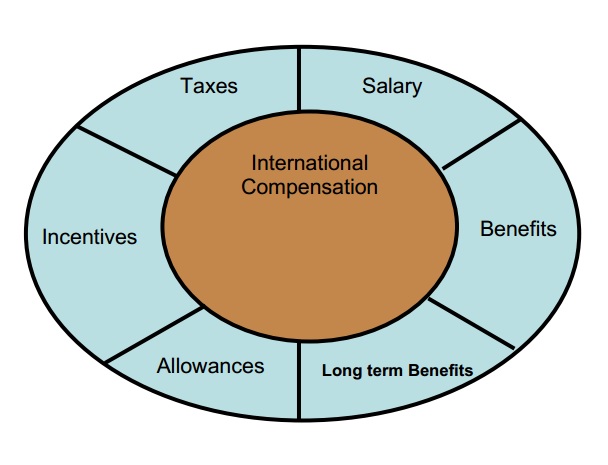The concept of organizational change is in regard to organization-wide change, as opposed to smaller changes such as hiring a new person, modifying a program, buying a new computer for the department etc. Examples of organization-wide change are a change in mission statement, restructuring operations (e.g., restructuring to self-managed teams, layoffs, etc.), new technologies, mergers, major collaborations, “rightsizing”, new programs such as Total Quality Management, Business Process Re-engineering, etc. Some experts refer to such change as “organizational transformation”. Organizational change means that there is a fundamental and radical reorientation in the way the organization operates. What are the forces, which necessitate change? Change should not be done for the sake of change — it is a strategy to accomplish the overall goal. Usually organizational change is provoked by some major outside driving force, e.g., substantial cuts in funding, address major new markets/clients, need for dramatic increases in productivity/services, etc. It Continue reading
Abey Francis
Benchmarking Analysis
In a complex, dynamic, fast-changing environment, companies must strive for superiority in order to survive. Competitive edge cannot be achieved or maintained by setting goals based on past or even present performance. Benchmarking is a management practice that can be used to pursue excellence. It does this by identifying, comparing and emulating best practice wherever it occurs. Read More: Benchmarking as a Strategic Business Tool Benchmarking is defined as a continuous systematic process of evaluating companies recognized as industry leaders, to determine business and work processes that represent best practices and establish rational performance goals. It is a search for industry best practices that lead to superior performance. It illustrates how good a company currently is in comparison to its competitors, that is benchmarking analysis demonstrates what others are doing as well as what others are achieving. Benchmarking analysis is an integral part of the organizational improvement process and it Continue reading
International Compensation Management
Designing and developing a better compensation package for HR professionals for the international assignments requires knowledge of taxation, employment laws, and foreign currency fluctuation by the HR professionals. Moreover, the socio-economic conditions of the country have to be taken into consideration while developing a compensation package. It is easy to develop the compensation package for the parent country national but difficult to manage the host and third country nationals. When a firm develops international compensation policies, it tries to fulfills some broad objectives: The compensation policy should be in line with the structure, business needs and overall strategy of the organization. The policy should aim at attracting and retaining the best talent. It should enhance employee satisfaction. It should be clear in terms of understanding of the employees and also convenient to administer. The employee also has a number of objectives that he wishes to achieve from the compensation policy Continue reading
International Human Resource Selection Procedures
Multinational Corporations (MNCs) use a number of selection procedures. The two most common are tests and interviews. Some international firms use one; a smaller percentage employ both. Theoretical models containing the variables that are important for adjusting to an oversea assignment have been developed. These adjustment models can help contribute to more effective selection of expatriates. The following sections examine traditional testing and interviewing procedures, then present an adjustment model. Testing and Interviewing Procedures Some evidence suggests that although some firms use testing, it is not extremely popular. For example, an early study found that almost 80 percent of the 127 foreign operations managers who were surveyed reported that their companies used no tests in the selection process. This contrasts with the more widespread testing that these firms use when selecting domestic managers. Many Multinational Corporations report that the costs, questionable accuracy, and poor predictive record make testing of limited Continue reading
Selection Criteria for International Assignments
Making an effective selection decision for an overseas assignment can prove to be a major problem. Typically, this decision is based on international selection criteria, which are factors used to choose international managers. These selections are influenced by the Multinational Corporations experience and often are culturally based. Sometimes as many as a dozen criteria are used, although most Multinational Corporations give serious consideration to only five or six. 1. Adaptability to Cultural Change Overseas managers must be able to adapt to change. They also need a degree of cultural toughness. Research shows that many managers are exhilarated at the beginning of their overseas assignment. After a few months, however, a form of culture shock creeps in, and they begin to encounter frustration and feel confused in their new environment. One analysis noted that many of the most effective international managers suffer this cultural shock. Organizations examine a number of characteristics Continue reading
Business and Globalization: National Differences Facing Operations
Working in another country or with an organization from another countries demands knowledge and consideration of their environmental forces in order to create a good strategic plan. To be successful in international business manager must be aware of the culture with which they deal. International operating companies must have a strategic management plan that takes in to consideration the real and potential forces in a foreign environment, as well as the forces at work in the domestic environment. A manager has to understand the new environment, which means understanding the people and their culture. Physical forces and geographic factors determine transportation and production cost. Mountains and deserts are barriers to the movement of people; ideas goods and services can be an advantage if the infrastructure is good. However, it can also be a disadvantage, because real estate and labor are more expensive. Another important area is legal considerations, both domestic Continue reading



